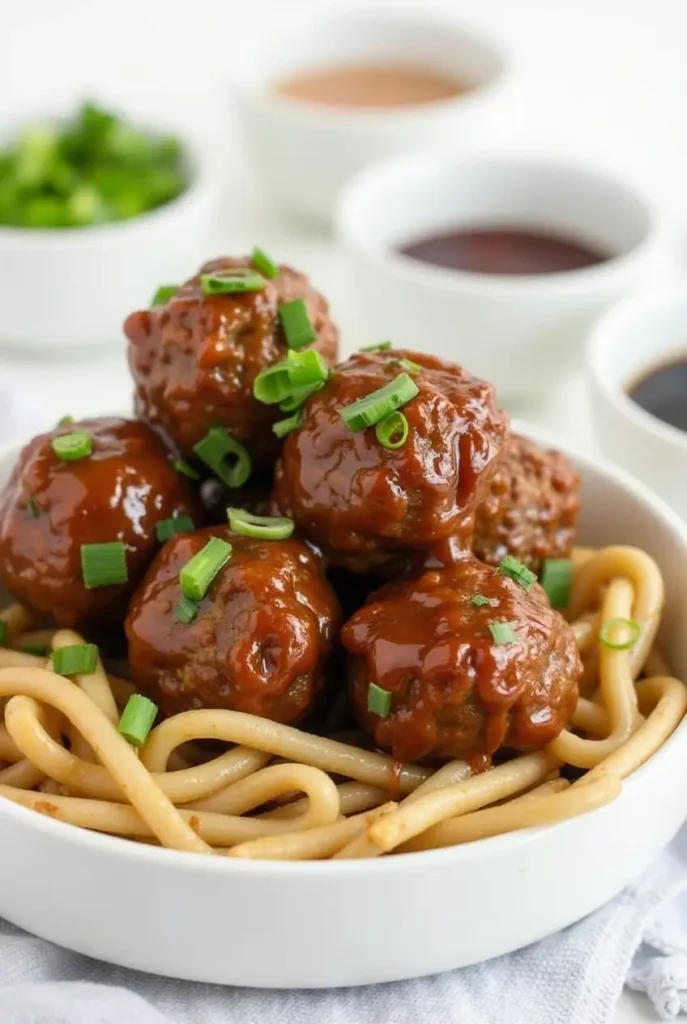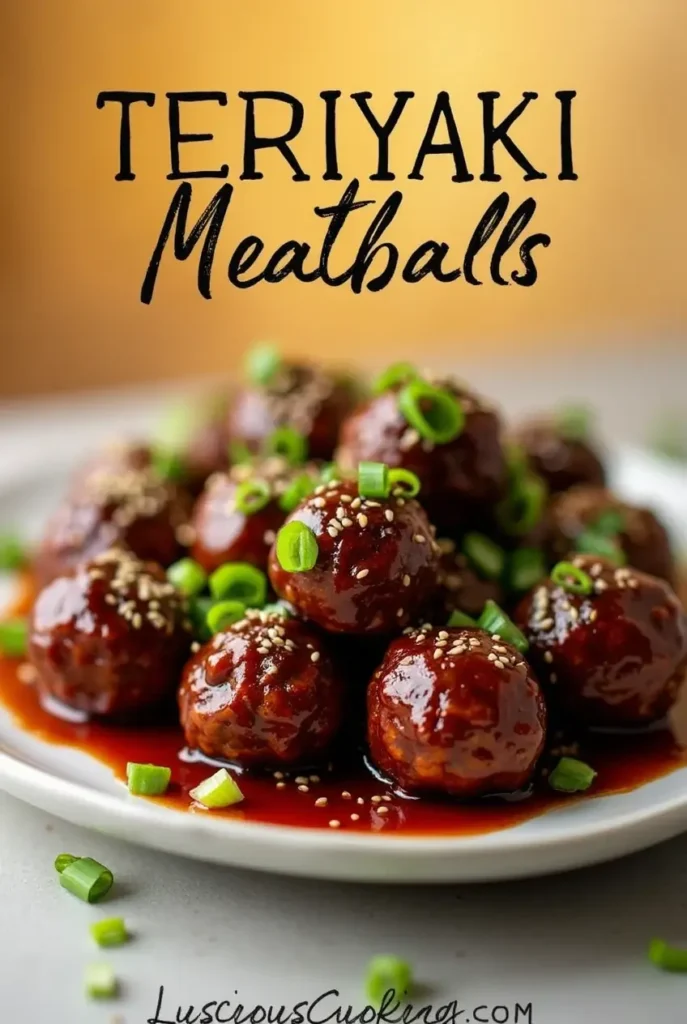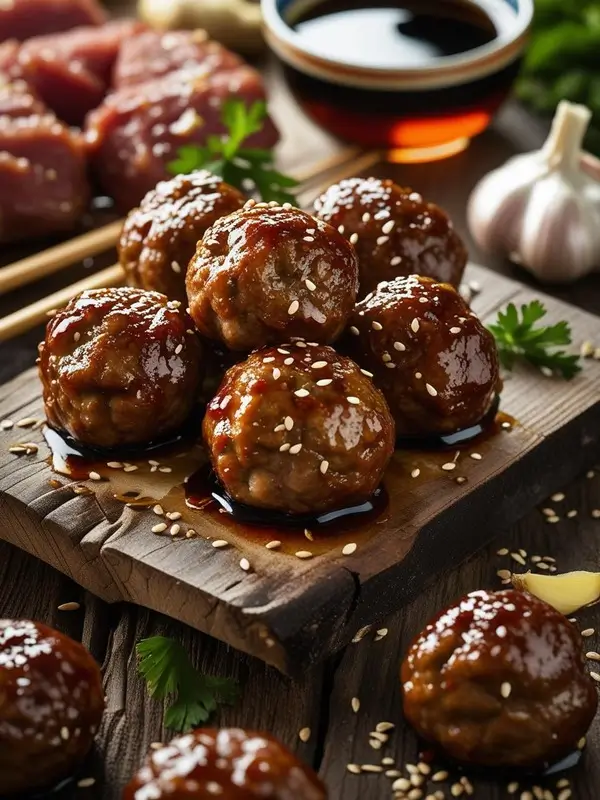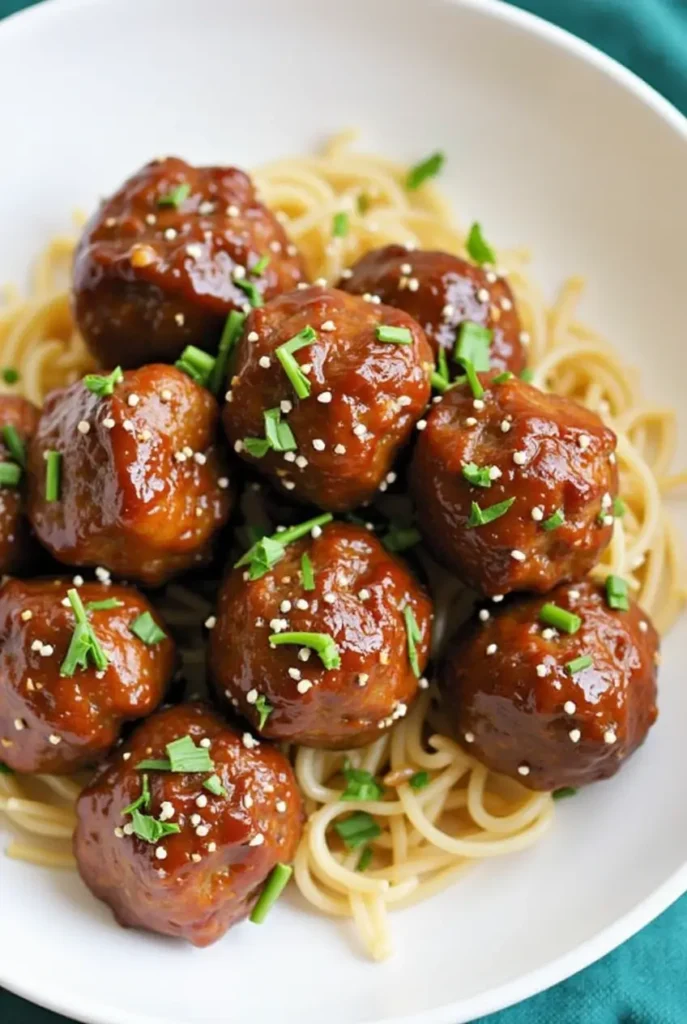Are you tired of the same old dinner routine? Do you crave something comforting and exciting, yet easy enough to whip up on a busy weeknight? Look no further—teriyaki meatballs are here to save the day! These juicy, flavor-packed bites, smothered in a sweet and savory teriyaki glaze, are guaranteed to make your taste buds sing. Pair them with a refreshing Greek salad or a light Tomato avocado salad for a perfectly balanced meal.
As someone who has spent years perfecting meat-based recipes (and devouring countless variations), I can confidently say these five recipes are absolute winners. From hearty dishes like ground beef stir fry to lighter options like easy taco salad, whether you’re cooking for picky eaters or hosting friends, they’re versatile enough to fit any occasion.

In this guide, we’ll cover everything from choosing the right meat to mastering cooking techniques. By the end, you’ll have all the tools you need to create restaurant-quality dishes at home. For more inspiration, check out our guide on Perfect Tomato Avocado Salad.
Why These Teriyaki Meatball Recipes Work
So why should you add these teriyaki meatball recipes to your weekly rotation? Let me break it down:
- Affordable Ingredients: You don’t need fancy cuts of meat or hard-to-find ingredients—just simple pantry staples like soy sauce, honey, and garlic.
- Quick Prep Time: Most marinades come together in under 15 minutes, so you won’t spend hours in the kitchen.
- Versatile Uses: Serve them over rice, toss them into noodles, or even use them as appetizers at your next party.
These teriyaki meatball recipes strike the perfect balance between convenience and flavor, making them ideal for busy weeknights or lazy weekend feasts. Additionally, their adaptability allows you to tweak them to suit dietary preferences without compromising the magic. For example, swapping ground beef for turkey makes them lighter, while adding extra spices can give them a bold, international flair—much like how you can transform simple ingredients in dishes such as ground beef stir fry into something extraordinary.
Moreover, one of the reasons these teriyaki meatball recipes stand out is their ability to satisfy diverse palates. Whether you’re feeding kids, impressing guests, or simply treating yourself, teriyaki meatballs deliver every time.
The combination of savory umami flavors with a touch of sweetness makes them universally appealing. According to nutritionists, incorporating lean proteins like ground turkey or chicken into your diet can also provide essential nutrients while keeping calorie counts manageable, “Healthline“.


Choosing the Right Meat for Your Teriyaki Meatballs
When it comes to teriyaki meatballs, selecting the right type of meat is crucial for achieving tender, flavorful results. Here’s what you need to know:
Best Cuts for Teriyaki Meatballs
- Ground Beef: A classic choice, ground beef provides rich flavor and juiciness. Opt for an 80/20 blend (80% lean, 20% fat) for maximum tenderness. The fat content ensures that the meatballs stay moist during cooking, while the lean portion keeps them from becoming greasy.
- Ground Turkey or Chicken: If you’re looking for a lighter option, these work beautifully too. Just be mindful not to overcook, as they dry out faster than beef. Adding a bit of olive oil or breadcrumbs can help retain moisture.
- Pork: Ground pork adds a hint of sweetness and pairs exceptionally well with teriyaki flavors. Its natural marbling makes it a great choice for juicy, succulent meatballs.
Buying Tips
- Look for fresh, bright-colored meat when shopping. Avoid packages with excessive liquid pooling at the bottom, as this indicates poor quality. Fresh meat should have a clean, slightly earthy smell—anything overly pungent is a red flag.
- Ask your butcher for freshly ground meat if possible—it makes a noticeable difference in texture. Pre-ground meat from grocery stores often sits on shelves longer, which can affect its freshness.
Substitutions for Teriyaki Meatballs
If you’re feeling adventurous, try swapping proteins based on your preference:
- Plant-Based Option: Use plant-based ground “meat” substitutes for a vegetarian twist. Brands like Beyond Meat or Impossible Burger mimic real meat remarkably well. Simply adjust the seasoning slightly to account for the different base flavors.
- Seafood Twist: Swap ground meat for finely chopped shrimp or salmon for a seafood-inspired version. These pair beautifully with teriyaki sauce and add a unique texture to the dish.
Here’s a quick table summarizing recommended meats and substitutions:
| Meat Type | Best For | Substitution |
|---|---|---|
| Ground Beef | Juicy, flavorful meatballs | Ground Pork |
| Ground Turkey | Lighter, healthier option | Ground Chicken |
| Plant-Based Meat | Vegetarian-friendly | Lentils + breadcrumbs mix |
For more insights into protein choices, visit EatingWell.
Additionally, understanding how different meats behave during cooking is key to success. For instance, ground beef tends to hold its shape better than turkey or chicken, which may require binding agents like eggs or breadcrumbs to prevent crumbling. On the other hand, pork’s natural fat content ensures moistness even after prolonged cooking, similar to how potatoes maintain their creamy texture in comforting dishes like hash brown potato soup.
Ingredients & Prep for Perfect Teriyaki Meatballs
Now that you’ve picked your meat, let’s talk about preparation and essential ingredients for crafting the best teriyaki meatballs.

Meat Prep Essentials
Before you start mixing, ensure your meat is properly prepped:
- Trim Excess Fat: While some fat is necessary for juiciness, trimming large chunks prevents greasiness.
- Chill Before Rolling: Cold meat holds its shape better during cooking. If you’re working with store-bought ground meat, consider chilling it in the fridge for 15–20 minutes before forming the balls.
Marinades/Rubs
A good marinade elevates teriyaki meatballs from ordinary to extraordinary. Here’s a basic formula:
- Base Ingredients: Soy sauce, honey, minced garlic, grated ginger, sesame oil, and cornstarch slurry.
- Marinating Time: Ideally, let the mixture sit for 15–30 minutes before rolling into balls. Overnight marination intensifies flavor but isn’t mandatory.
To achieve the best results, consider using high-quality ingredients. For instance, low-sodium soy sauce allows you to control the saltiness of the dish, while pure honey provides a richer sweetness compared to artificial alternatives. Similarly, fresh ginger and garlic impart brighter, more aromatic flavors than their powdered counterparts.
Pantry Staples
Stock up on these essentials for seamless prep:
- Vegetable oil (for frying or baking)
- Cornstarch (to thicken sauces)
- Sesame seeds and green onions (for garnish)
Check out Delish for additional tips on pantry organization.
To ensure your marinade truly shines, consider using freshly grated ginger instead of powdered versions—it imparts a brighter, more aromatic flavor. Similarly, toasted sesame oil adds depth that regular varieties lack. Don’t skimp on these small details; they elevate your dish significantly.
Step-by-Step Cooking Instructions for Teriyaki Meatballs
Ready to roll up your sleeves? Follow these steps for perfectly cooked teriyaki meatballs:

Pre-Cooking Prep
- Pat the meat mixture dry to avoid excess moisture while cooking.
- Bring the meatballs to room temperature for even cooking.
Cooking Method
Choose one of these methods:
- Baking: Preheat oven to 400°F (200°C). Bake for 20–25 minutes until golden brown. Baking is a hands-off method that works well for larger batches.
- Pan-Frying: Heat oil in a skillet over medium heat. Cook until browned on all sides. Pan-frying creates a crispy exterior and is ideal for smaller servings.
Doneness Check
Use a meat thermometer to ensure internal temperatures reach:
- Beef/Pork: 160°F (71°C)
- Turkey/Chicken: 165°F (74°C)
Resting Your Teriyaki Meatballs
Let the meatballs rest for 5 minutes after cooking to retain juices. Resting allows the residual heat to redistribute moisture throughout the meat, preventing dryness.
Cooking teriyaki meatballs requires attention to detail. For example, overcrowding the pan during frying can lead to steaming rather than browning, which compromises texture. Similarly, baking allows for hands-off cooking but may result in slightly drier meatballs unless brushed generously with sauce halfway through, just like how pasta dishes such as tomato basil pasta benefit from proper sauce application timing for optimal flavor absorption.
Another helpful tip is to simmer the finished meatballs in the teriyaki sauce for a few minutes before serving. This step ensures that every bite is infused with flavor and coated in that irresistible sticky glaze.
Pro Tips for Perfect Teriyaki Meatballs
Take your skills to the next level with these expert tips for crafting flawless teriyaki meatballs:
- Avoid Overcrowding: Cook in batches to prevent steaming instead of browning.
- Tool Recommendations: Invest in a reliable meat thermometer and non-stick skillet.
- Storage & Reheating: Store leftovers in an airtight container for up to 3 days. Reheat gently in a pan with a splash of water to keep them moist.
Another pro tip is to double the batch size. Teriyaki meatballs freeze exceptionally well, making them perfect for future meals. Simply thaw overnight in the fridge and reheat as needed.
For those who love experimenting, try adding unexpected ingredients to your meat mixture. For example, grated zucchini or carrots not only add moisture but also sneak in extra nutrients. Alternatively, mixing in crushed pineapple can enhance the sweetness and complement the teriyaki sauce beautifully.
Flavor Variations for Teriyaki Meatballs
Customize your teriyaki meatballs to match your mood or dietary needs:

- Spicy Twist: Add sriracha or red pepper flakes to the marinade.
- Keto/Paleo: Swap honey for sugar-free syrup. Coconut aminos can replace soy sauce for a paleo-friendly alternative.
- Global Flavors: Experiment with Korean gochujang or Italian herbs.
For inspiration, explore cuisines beyond traditional Japanese teriyaki. For instance, adding lime juice and cilantro creates a zesty Mexican-inspired variation, while curry powder lends an Indian flair. You could even incorporate Mediterranean flavors by tossing in oregano, feta, and sun-dried tomatoes for a fusion twist.
Serving Suggestions
Pair your teriyaki meatballs with these side dishes for a complete meal:
- Steamed jasmine rice
- Stir-fried vegetables
- Grilled asparagus
For wine pairings, consider a crisp white wine like Sauvignon Blanc. Alternatively, pair with a light beer such as Hefeweizen for a refreshing contrast.
A helpful serving suggestion table might look like this:
| Side Dish | Pairing Notes | Dietary Options |
|---|---|---|
| Jasmine Rice | Absorbs teriyaki sauce beautifully | Gluten-free |
| Stir-Fried Broccoli | Adds crunch and nutrients | Vegan-friendly |
| Miso Soup | Complements umami flavors | Low-calorie option |
For those who enjoy salads, pairing Perfect Tomato Avocado Salad with your meatballs creates a refreshing balance of textures and flavors. The creamy avocado and juicy tomatoes offset the richness of the teriyaki glaze perfectly.
FAQs About Teriyaki Meatballs
Got questions? We’ve got answers!
- Can I use frozen meat? Yes, thaw completely before using. However, freshly ground meat yields better texture and flavor.
- How do I fix overcooked meatballs? Simmer them in sauce to rehydrate. Adding a splash of broth or water can also help restore moisture.
- Is this recipe safe for pregnant women? Always ensure proper cooking temperatures to eliminate any risk of foodborne illness.
Conclusion
There you have it—the ultimate guide to creating mouthwatering teriyaki meatballs. Fire up your stove and give these recipes a try tonight! With thousands of satisfied home cooks already raving about them, you won’t want to miss out. And once you’ve mastered these, why not explore our other guides like Perfect Tomato Avocado Salad?
For more health-conscious tips, visit Healthline. Happy cooking!

